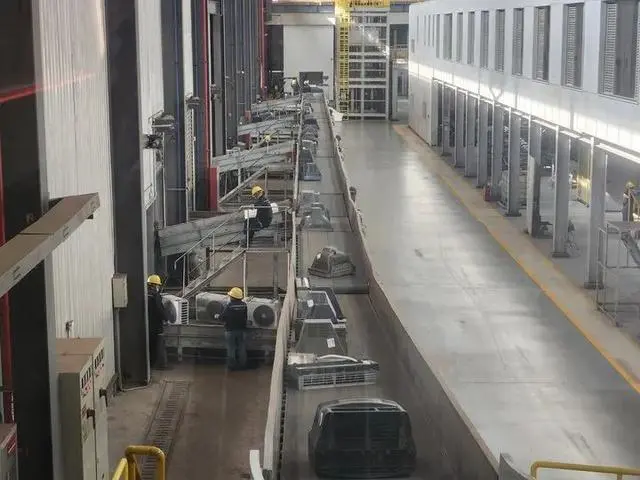
With the continuous introduction of various policies at all levels,
Frequent merchant promotional activities,
Someone around has already experienced it first
During this period,
If you don't know how to trade in old appliances for new ones,
Just can't keep up with the trend.
Where will the discarded household appliances go after replacement?
How to recycle and regenerate?
Experience this wonderful journey of turning waste into treasure.
Scrap home appliance dismantling factory
First stop: Recycling
In a waste recycling service station, there are old appliances such as refrigerators, televisions, and computer consoles.
The mobile phone prompted a resident to place an order, and Master Luo Dahai put on his toolkit and rode an electric tricycle before departing. This site receives recyclable items from surrounding communities, including a lot of waste paper and plastic, as well as used household appliances.
Leaving the homes of residents is the starting point for the journey of recycling household appliances.
The recycling service station 1 has been working for several years. During this period of door-to-door recycling, some residents began to ask him, "What is exchanging old for new?"
Second Station: Sorting
At the entrance of the service station, the recycled waste will be gradually moved into the carriages. Trucks carrying waste are gradually entering the sorting warehouse. After weighing and unloading, the master registers the information of the waste household appliances into the warehouse and moves them to various cargo boxes.
In the factory building, a row of shelves are divided into various types of waste household appliances. Washing machines have different types of wheels and rollers, air conditioners are placed on the wall or cabinet, while televisions have old-fashioned televisions and LCD screens
Wang Wenqin, Director of the Renewable Resources Center, said that on average, about 1500 waste appliances are recycled every month, with over 98% of them being four machines and one brain (referring to refrigerators, washing machines, air conditioners, televisions, and computers). "Home appliance recycling also has seasonality, especially in summer. The demand for updating refrigeration equipment such as air conditioners and refrigerators has increased, which is also related to the more e-commerce promotional activities in June."
On the company's big data information screen, more detailed data records the daily life updates of residents: on April 17th, 29 pieces of electrical appliances were received; As of 15:00 on April 17th this year, the company has collected 1195 televisions, 732 microcomputers, 92 air conditioners, 701 refrigerators, and 895 washing machines.
Third stop: dismantling
After sorting, waste textiles and plastics flow to clothing companies, plastic product companies, etc. Large household appliances will be sent to specialized dismantling companies. Storage, weighing, and assigning traceability codes... The large household appliances received by "Tiger Brother" were dismantled in the factory area.
Fourth stop: Regeneration
Accurate classification is related to the reuse rate of the dismantled materials by downstream deep processing enterprises, ensuring that the recycled materials are delivered to the right place in the correct way.
The common motors in household appliances include "aluminum and copper. Mixing the two metals can affect economic benefits and lower the production efficiency of downstream enterprises. This requires employees on the dismantling line to have high professional skills."
Every month, purchase approximately 5000 to 6000 tons of discarded refrigerators and air conditioning compressors.

 Where exactly did the discarded household appliances that were not wanted at home go?-Information-Jiangxi Mingxin
Where exactly did the discarded household appliances that were not wanted at home go?-Information-Jiangxi Mingxin